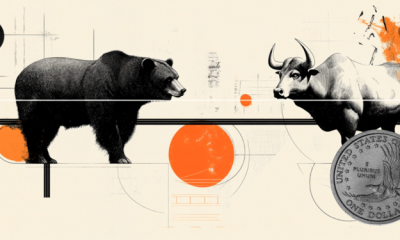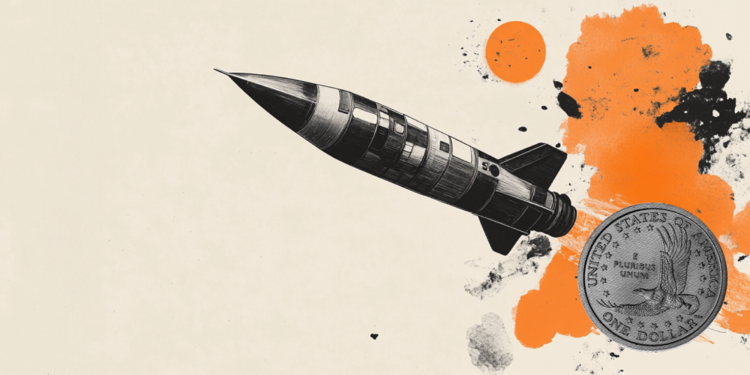

others
US Dollar Index rebounds above 99.50 on US trade talks progress – Crypto News
- The US Dollar Index recovers to around 99.75 in Friday’s early European session.
- Hope for US trade talks with allies to support the US Dollar.
- China pushes for tariff cancellation to end the trade war.
The US Dollar Index (DXY), an index of the value of the US Dollar (USD) measured against a basket of six world currencies, edges higher to near 99.75 during the early European session on Friday amid positive developments in negotiations with allies India, Japan and South Korea. Investors brace for the final reading of the US Michigan Consumer Sentiment, which is due later on Friday.
US Treasury Secretary Scott Bessent has suggested that India is likely to become the first country to finalise a bilateral trade agreement with the US to avoid Trump’s reciprocal tariffs on Indian exports. Japan’s economy minister, Ryosei Akazawa, will hold a second round of trade talks with Bessent next week.
Meanwhile, South Korea asked for “calm” and “orderly” discussions with the US on trade issues, as it seeks to work out a deal with the US before the pause on reciprocal tariffs is lifted in July. Any signs of trade talks progress could lift the Greenback in the near term.
“If the perception spreads that a reduction in tariffs is near, it could positively influence tariff negotiations with other countries, leading to a retreat from risk-off sentiment and a decrease in U.S. asset selling,” which could buoy the dollar back to 145 yen, Mizuho analysts wrote in a note.
On the other hand, traders were concerned about the prospects for the US economy given Trump’s inconsistent message on trade agreements and Federal Reserve intervention. Additionally, a lack of actual progress toward opening talks with China could drag the USD lower against its rivals.
Trump said late Thursday that his administration was talking with China on trade. However, Beijing said that no negotiations had been held on the economy and trade, and it urged the US to lift all unilateral tariff measures if it really wished to resolve the issue.
US Dollar FAQs
The US Dollar (USD) is the official currency of the United States of America, and the ‘de facto’ currency of a significant number of other countries where it is found in circulation alongside local notes. It is the most heavily traded currency in the world, accounting for over 88% of all global foreign exchange turnover, or an average of $6.6 trillion in transactions per day, according to data from 2022.
Following the second world war, the USD took over from the British Pound as the world’s reserve currency. For most of its history, the US Dollar was backed by Gold, until the Bretton Woods Agreement in 1971 when the Gold Standard went away.
The most important single factor impacting on the value of the US Dollar is monetary policy, which is shaped by the Federal Reserve (Fed). The Fed has two mandates: to achieve price stability (control inflation) and foster full employment. Its primary tool to achieve these two goals is by adjusting interest rates.
When prices are rising too quickly and inflation is above the Fed’s 2% target, the Fed will raise rates, which helps the USD value. When inflation falls below 2% or the Unemployment Rate is too high, the Fed may lower interest rates, which weighs on the Greenback.
In extreme situations, the Federal Reserve can also print more Dollars and enact quantitative easing (QE). QE is the process by which the Fed substantially increases the flow of credit in a stuck financial system.
It is a non-standard policy measure used when credit has dried up because banks will not lend to each other (out of the fear of counterparty default). It is a last resort when simply lowering interest rates is unlikely to achieve the necessary result. It was the Fed’s weapon of choice to combat the credit crunch that occurred during the Great Financial Crisis in 2008. It involves the Fed printing more Dollars and using them to buy US government bonds predominantly from financial institutions. QE usually leads to a weaker US Dollar.
Quantitative tightening (QT) is the reverse process whereby the Federal Reserve stops buying bonds from financial institutions and does not reinvest the principal from the bonds it holds maturing in new purchases. It is usually positive for the US Dollar.
-

 Blockchain4 days ago
Blockchain4 days agoOn-Chain Tokenization for Payments Professionals – Crypto News
-
Cryptocurrency1 week ago
Pi Community Highlights Pi Coin’s Slow Growth As ‘Strategic’ – Crypto News
-
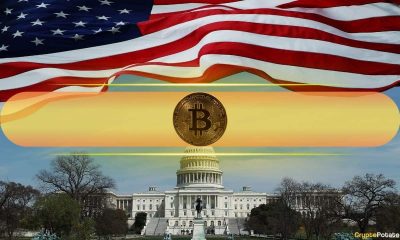
 Cryptocurrency1 week ago
Cryptocurrency1 week agoWhite House Mulls Bitcoin Reserve Backed by Gold and Tariffs – Crypto News
-

 Cryptocurrency1 week ago
Cryptocurrency1 week agoOKX Returns to US Market Following $505M DOJ Deal – Crypto News
-

 Blockchain1 week ago
Blockchain1 week agoBitcoin online chatter flips bullish as price chops at $85K: Santiment – Crypto News
-

 Business1 week ago
Business1 week agoWorldpay and FIS Deals Echo 2019’s Payments Megamergers – Crypto News
-
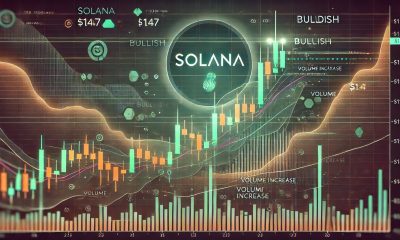
 Blockchain1 week ago
Blockchain1 week agoSolana Turns Bullish On 8H Chart – Break Above $147 Could Confirm New Trend – Crypto News
-

 Cryptocurrency1 week ago
Cryptocurrency1 week agoA decade in, Liberland needs the Bitcoin standard more than ever – Crypto News
-
Business1 week ago
Galaxy and State Street Hong Kong to Launch New Crypto Investment App – Crypto News
-
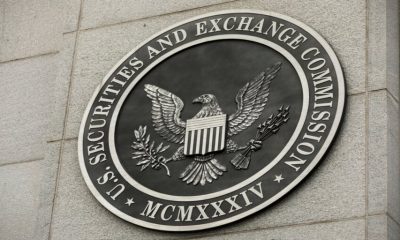
 Cryptocurrency1 week ago
Cryptocurrency1 week agoJudge Pauses 18-State Lawsuit Against SEC, Saying It Could ‘Potentially Be Resolved’ – Crypto News
-
Cryptocurrency6 days ago
Copper and P2P.org announce strategic collaboration to elevate institutional staking solutions – Crypto News
-

 Technology1 week ago
Technology1 week agoMoto Book 60 laptop, Pad 60 Pro launched in India: Price, features, battery and more – Crypto News
-
Business1 week ago
Cardano (ADA) and Dogecoin (DOGE) Eye For Bullish Recovery – Crypto News
-
Technology1 week ago
Coinbase Reveals Efforts To Make Its Solana Infrastructure Faster, Here’s All – Crypto News
-

 others1 week ago
others1 week agoMantra CEO Says New Details on OM Token Buyback and Supply Burn Program Coming Soon – Crypto News
-
Technology1 week ago
Expert Predicts Pi Network Price Volatility After Shady Activity On Banxa – Crypto News
-
others1 week ago
XRP Price Forecast: Ripple Settles With SEC—Is $2 the New XRP Price Floor? – Crypto News
-

 Technology1 week ago
Technology1 week agoIndia, Australia explore bilateral data-sharing treaty to tackle cybercrime – Crypto News
-
others1 week ago
Coinbase Reveals Efforts To Make Its Solana Infrastructure Faster, Here’s All – Crypto News
-
Business1 week ago
AERGO Price Rockets Amid Binance & Other Major Listings – Crypto News
-

 others1 week ago
others1 week agoPresident Trump Planning Launch of New Monopoly-Inspired Crypto Game: Report – Crypto News
-
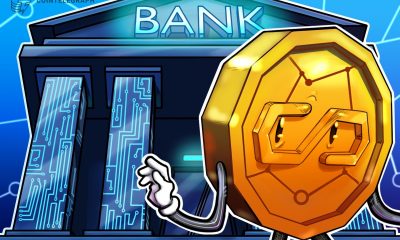
 Blockchain1 week ago
Blockchain1 week agoStablecoins’ dominance due to limitations of US banking — Jerald David – Crypto News
-

 Cryptocurrency1 week ago
Cryptocurrency1 week agoSOL remains bullish amid broader market stagnation – Crypto News
-
Business1 week ago
Crypto Whales Bag $20M In AAVE & UNI, Are DeFi Tokens Eyeing Price Rally? – Crypto News
-

 Blockchain1 week ago
Blockchain1 week agoJio partnership to drive real-world Web3 adoption for 450M users – Crypto News
-

 others1 week ago
others1 week agoCAD gives up mild gain led by steady BoC – Scotiabank – Crypto News
-

 Cryptocurrency1 week ago
Cryptocurrency1 week agoAAVE heads for Aptos: Will this high-speed expansion spark a 30% rally? – Crypto News
-
Business1 week ago
Coinbase Reveals Efforts To Make Its Solana Infrastructure Faster, Here’s All – Crypto News
-

 Technology1 week ago
Technology1 week agoGoogle hit with major antitrust ruling over online advertising practices: All about the case – Crypto News
-
Cryptocurrency1 week ago
Solana Price Recovers as 71% Traders on Binance Predict a Bullish Breakout – Crypto News
-
others1 week ago
How High Should Dogecoin Price Rise to Turn $10K to $100K? – Crypto News
-
others7 days ago
Will Pi Network Price Crash or Rally After 212M Unlocks? – Crypto News
-

 Cryptocurrency1 week ago
Cryptocurrency1 week agoUp By Over 5% In the Last Week, How High Can Ethereum Price Rise? – Crypto News
-
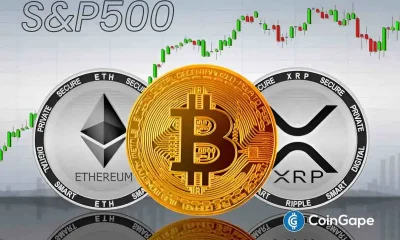
 Business1 week ago
Business1 week agoS&P 500 Forms First Death Cross Since 2022 – Crypto News
-

 Technology1 week ago
Technology1 week agoOpenAI launches ’Image Library’ for ChatGPT users: What is it and how the new feature work – Crypto News
-

 Cryptocurrency1 week ago
Cryptocurrency1 week agoOKX Returns to US Market Following $505M DOJ Deal – Crypto News
-
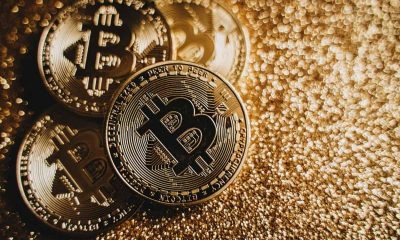
 Cryptocurrency1 week ago
Cryptocurrency1 week agoPerformance of Hard Assets Bitcoin and Gold ‘Remains Remarkable:’ Glassnode – Crypto News
-

 others1 week ago
others1 week agoIs Bitcoin Bottom In? Crypto Analytics Firm Says a ‘Step Back’ for BTC Could Fuel the Next Leg Higher – Crypto News
-

 Cryptocurrency1 week ago
Cryptocurrency1 week agoSolana Price Attempts $135 Breakout, Momentum Sends Mixed Signals – Crypto News
-

 Blockchain1 week ago
Blockchain1 week agoBitcoin miner Bit Digital acquires $53M facility as AI, HPC push continues – Crypto News
-

 others1 week ago
others1 week agoUnitedHealth stock caves 23% as it cuts full-year guidance – Crypto News
-

 Blockchain1 week ago
Blockchain1 week agoEthereum Fees Fall To 2019 Levels—Details – Crypto News
-

 others1 week ago
others1 week agoTwo reasons why Schwab’s earnings soared 46% in Q1 – Crypto News
-
Business7 days ago
Coinbase Faces Renewed Legal Battle as Oregon Revives Old SEC Playbook – Crypto News
-

 Blockchain5 days ago
Blockchain5 days agoAltcoin unit bias ‘absolutely destroying’ crypto newbies — Samson Mow – Crypto News
-
Business4 days ago
Expert Says Solana Price To $2,000 Is Within Reach, Here’s How – Crypto News
-
Business1 week ago
OKX Expands To The US With New Cryptocurrency Exchange And Wallet – Crypto News
-

 Blockchain1 week ago
Blockchain1 week agoMarket maker deals are quietly killing crypto projects – Crypto News
-
Technology1 week ago
Trump-backed WLFI Crypto Project Brings New Advisor – Who Is Bilal Bin Saqib? – Crypto News
-
Business1 week ago
DOGE Whale Moves 478M Coins As Analyst Predicts Dogecoin Price Breakout “Within Hours” – Crypto News

